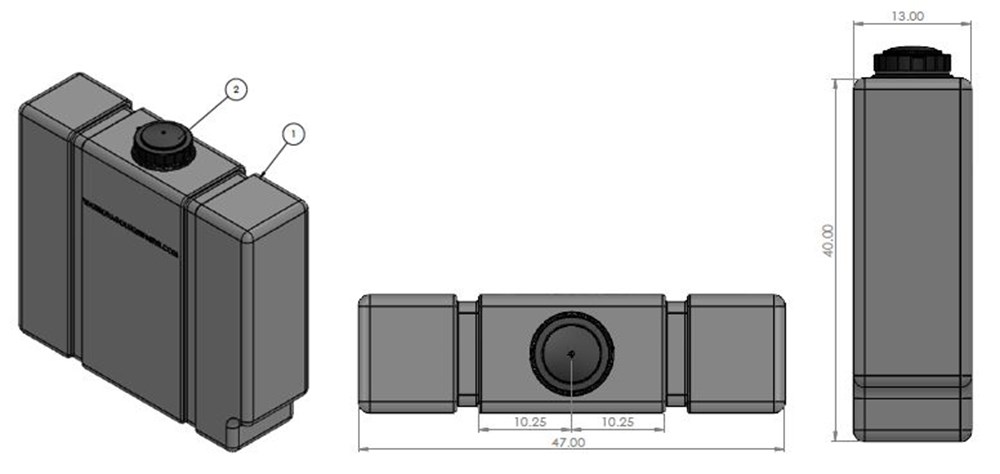Discover the Conveniences of Slimline Water Tanks for Space-Saving Storage
Discover the Conveniences of Slimline Water Tanks for Space-Saving Storage
Blog Article
Comprehending the Importance of Rainwater Tanks in Drought-Prone Regions for Water Protection
In areas susceptible to long term droughts, the duty of rainwater containers in boosting water security is a subject of growing relevance. As neighborhoods face the difficulties of water deficiency, comprehending the significance of these storage tanks surpasses plain collection of rainwater. Rain tanks function as a vital tool in mitigating the effect of water scarcities by offering a lasting source of water for numerous needs. Nevertheless, real value of rain containers extends much past mere storage space; it incorporates resilience-building steps and the promo of long-term water conservation approaches. This multifaceted method to water safety warrants a more detailed evaluation of the function rain containers play in making sure a trusted supply of water during times of dry spell.
Benefits of Rainwater Tanks
Utilizing rainwater storage tanks uses a lasting option for increasing water system and improving water safety in property and industrial settings. One of the primary advantages of rainwater tanks is their capacity to minimize reliance on mains water. By capturing and saving rainwater that drops on roofs, this different source can be made use of for numerous non-potable functions such as watering, flushing commodes, and washing clothing. This not just saves treated drinking water but likewise reduces water expenses for individuals.

Rainwater Harvesting Techniques
Rainwater harvesting techniques incorporate a series of approaches made to successfully accumulate and save rain for different functions, contributing to water conservation and sustainability. One common technique is the installment of roof catchment systems, where rain is gathered from the roofing system of a building and directed to a tank. This technique is reasonably straightforward and cost-efficient. An additional popular method is the usage of above-ground or underground storage tanks to store rain for later use. These tanks come in numerous dimensions and materials to match various requirements and can be connected to the existing pipes system for simple access.

Additionally, rainfall yards and permeable pavements are ingenious strategies that involve landscaping or paving surface areas in a means that allows rainwater to percolate right into the ground, restoring groundwater reserves. Furthermore, shape farming and terracing are farming techniques that assist catch rain and prevent soil erosion in uneven surface. By applying these diverse rainwater harvesting methods, communities can enhance water protection and strength in drought-prone areas while promoting sustainable water management practices.
Value of Water Safety
Making certain dependable access to clean and adequate water resources is vital for maintaining human wellness, financial growth, and ecological health. Water protection is a crucial aspect of societal resilience, particularly in regions susceptible to dry spells and water deficiency. Adequate water safety and security encompasses various dimensions, consisting of schedule, top quality, and availability of water for domestic, agricultural, industrial, and ecological demands.
Water safety plays a vital duty in advertising public health and wellness by decreasing the prevalence of waterborne diseases and making company website certain hygiene important site facilities. Economically, water security is crucial for farming productivity, commercial procedures, and general economic development. Slimline water tanks. Water safety is closely linked to ecological sustainability, as it sustains ecosystems, biodiversity, and total ecological balance.
In drought-prone areas, water safety and security becomes a lot more essential because of the enhanced danger of water scarcities. Executing strategies like rainwater harvesting, water recycling, and reliable water administration techniques can considerably boost water safety and security in these locations. By prioritizing water protection, communities can much better withstand the effects of environment change, population development, and various other challenges that endanger water schedule.
Enhancing Water Resilience
With enhancing international water challenges, developing strength in water systems has ended up being a crucial focus for sustainable advancement initiatives. Enhancing water strength involves executing methods to make certain water availability and high quality when faced with transforming ecological problems, such as dry spells, floods, and pollution.
One secret element of improving water strength is advertising making use of rain tanks in drought-prone regions - Slimline water tanks. Rain containers function as an efficient ways of catching and saving rain for later usage, lowering reliance on scarce freshwater sources during dry periods. By incorporating rainwater harvesting systems into water management strategies, areas can boost their capacity to hold up against water deficiency and keep water safety

Sustainable Water Conservation
In the middle of rising water obstacles, the prudent management of water resources via lasting conservation practices is critical for ensuring long-term environmental stability and social wellness. Lasting water preservation requires the reliable use of water resources to meet existing needs without compromising the ability of future generations to meet their very own demands. By implementing methods such as rain harvesting, greywater recycling, and water-efficient modern technologies, areas can lower water wastefulness and alleviate pressure on freshwater resources.
In addition, lasting water preservation techniques add to ecosystem wellness by preserving appropriate water levels in rivers, lakes, and wetlands, supporting biodiversity, and preserving all-natural environments. These methods likewise play an important function in mitigating the impacts of climate adjustment by aiding to adapt to changing precipitation patterns and water schedule.

Conclusion
Finally, rain tanks play a vital duty in enhancing water safety and strength in drought-prone regions. By utilizing rainwater harvesting strategies, areas can reduce visit our website their reliance on standard water resources and promote sustainable water conservation techniques. This not just aids mitigate the effects of water shortage throughout dry spells yet additionally contributes to long-term water safety and security and durability when faced with environment modification obstacles.
Report this page